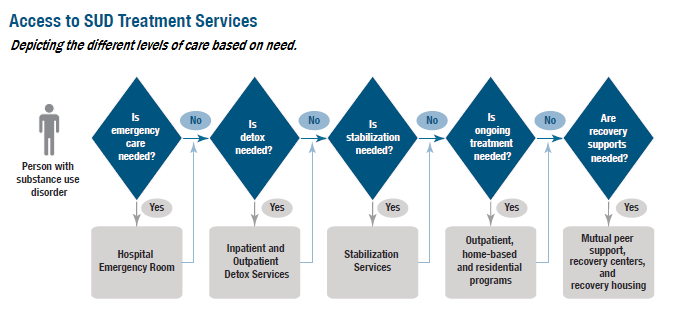Substance Use Disorder
CHIA's Access to Substance Use Disorder Treatment in Massachusetts, describes the continuum of care for substance use disorder treatment in Massachusetts, evaluates coverage for those services across payers, including commercial health insurance and public payers, and examines the accessibility of services based on provider availability and provides a description of specific potential barriers to treatment access.
CHIA is mandated to produce this report under Chapter 258 of the Acts of 2014, “An Act to Increase Opportunities for Long-Term Substance Abuse Recovery.” Its findings will help inform the Health Policy Commission as it recommends policies to ensure access to and coverage for substance use disorder treatment throughout Massachusetts.
This research is part of a larger body of work on substance use disorder for which CHIA has been engaged. Other research includes mandated benefit reviews of treatment for substance abuse contained in Chapter 258.
Key findings:
- Approximately 10% of the Massachusetts population suffers from substance use disorder (SUD). These disorders are both treatable and preventable. Most who meet the criteria for substance use disorder do not receive treatment. Left untreated, the potential effects can be serious. Between 2000 and 2012, fatal opioid overdoses in Massachusetts increased by 90%, and are projected to have increased by 46% from 2012 to 2013.
- Services across the SUD continuum are available in Massachusetts, but the existence of a range of services does not mean that people with SUD are always able to access the care they need at the time they need it. Barriers to access include service capacity and design, benefit coverage, and inadequate information about the SUD care continuum.
- Service patterns differ for SUD services among adults of different ages. Younger adults between the ages of 19 and 25 represent only 10% of all commercial members, but account for 29% of all SUD inpatient discharges and 14% of all SUD outpatient encounters. Adults ages 26 to 64 represent 54% of all members, while constituting 64% of all SUD inpatient discharges and 85% of all SUD outpatient encounters provided.

